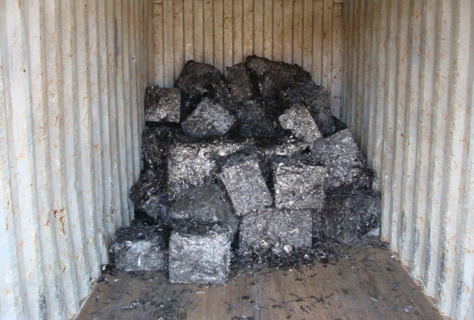
In order to provide high density to light metal, baling is a common process done globally. Normally such light material goes into a shredder, but shredding plants are not easy to install everywhere, as easily as getting a baling machine. This grade is attractive to buyers because of the discount in its price compared to regular melting scrap. The bale size can vary from 300 mm x 300 mm up to 600 mm x 600mm, cubular or rectangular.
A bale should normally be free of impurities, food cans, paint tins, beverage cans etc., which are harmful for steel melting. A good baling machine can produce high density bales which can yield a cargo mass of 26 to 27 tons in a 20 feet container. The compaction and the baling process imparts high density to light metal which otherwise is difficult to consume in a steel melting furnace. This quality conforms to ISRI 209.
These bales are made by compression and baling of fresh new tin sheets arising from factories manufacturing new cans for F&B Industry. Used beverage cans are completely excluded from this grade. Bale size can vary from 300mm x 300mm up to 600mm x 600mm, cubular or rectangular. Used as a charge mix in the furnace, most induction furnaces in the Indian Sub-Continent have a liking for this material.




Many tin-can manufacturing units have an in-house process of recovering tin from their factory rejections, as tin is a very expensive metal. This process is called De-tinning. Once tin is removed from a sheet of metal, the residue will be as good as Cold Rolled steel. This would then conform to our grade of New Black Bales (to follow next) in terms of quality, yield and residue. However, the supply availability of this product is limited due to the nature of its origin. Bale size can vary from 300mm x 300mm up to 600mm x 600mm, cubular or rectangular.



